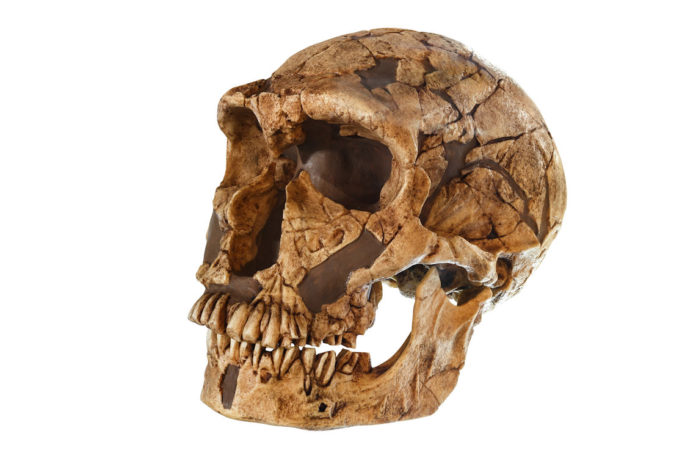Neanderthals are a species of early human that appeared about 200 thousand years ago. They became extinct 30 thousand years ago. The name Neanderthal comes from the Neander Valley in Germany. The first Homo neanderthalensis fossils were located at this site.
About the Neanderthals
Where Did They Live?
The Neanderthals were mostly located in Europe. However, their population also extended into West Asia.
During their time on Earth, they lived through the last Ice Age. As such, they were a hardy species capable of living under extreme conditions. However, in the end, they became extinct.
Relationship Between Neanderthals and Modern Man
Neanderthals are usually classified as Homo neanderthalensis. This indicates that it is a separate species from modern humans or Homo sapiens. However, some scientists believe that Neanderthals are a subspecies of modern humans. They classify the Neanderthals as Homo sapiens neanderthalensis. DNA research supports this idea. Genetic information reveals that the two species bred with one another. Usually, two different species cannot breed with each other.
Physically, the Neanderthal was much stockier than modern humans. Its skull had large brow ridges. And, its nose was quite large. The Neanderthal had a broad chest with relatively short legs. Despite the brutish appearance, it possessed a brain as large or larger than modern humans.
Neanderthal Culture
Neanderthals were tool makers. They made tools from stone and bone. The Neanderthal used these tools to hunt, skin carcasses, and prepare food. It is also possible that Neanderthals made flutes and were capable of music.
This relative of humans was a hunter and gatherer. Its diet included meat and plant material. The practice of traditional medicine with plant materials is a possibility.
Finally, the Neanderthal was a social creature. It lived in small, nomadic hunting groups. Remains show that the Neanderthal buried their dead. This suggests early spiritual behavior. Some buried skeletons show evidence of injury or disease. These individuals were not able to care for themselves. However, it is likely that the group provided care and support for them.
Reflections
Vocabulary
- hunter and gatherer
- nomadic
- traditional medicine
Notes
- Neanderthals were close relatives to modern humans.
- They lived from 200 to 30 thousand years ago.
- The Neanderthal lived in hunting and gathering bands.
Bibliography
- A Prehistory Study Guide
- About Prehistory
- Homo neanderthalensis, Smithsonian.

